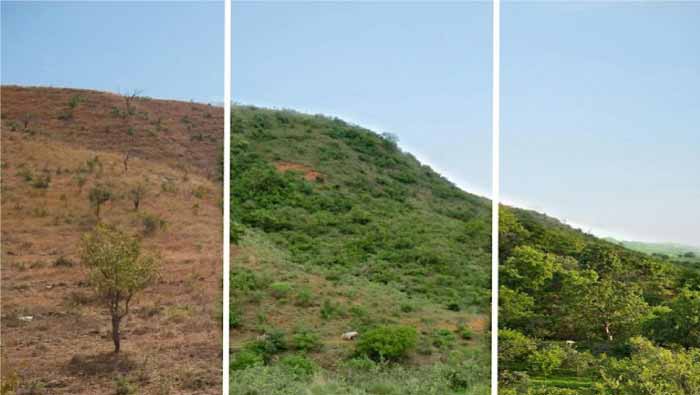Biodiversity conservation is important for maintaining ecosystem health and balance. The protection of endangered species is an essential part of biodiversity conservation. This is achieved through the implementation of conservation measures in the species’ natural habitat, the regulation of hunting and fishing, and public education and awareness. International efforts also play an important role in protecting endangered species through the Convention on International Trade in Endangered Species of Wild Fauna and Flora (CITES).
Concrete measures for biodiversity conservation
Some concrete measures to conserve biodiversity and protect endangered species include:
Creation of protected areas: Establish national parks, nature reserves and other protected areas to preserve the habitat of endangered species.
Regulation of hunting and fishing: Set limits and seasons of hunting and fishing, as well as prohibit illegal hunting and fishing.
Habitat restoration: Reforesting and restoring degraded ecosystems to provide habitat for endangered species.
Education and awareness: Educate the population about the importance of biodiversity conservation and how each person can contribute to protecting endangered species.
Invasive species control: Control and eradicate invasive species that compete with native species and degrade their habitat.
Community participation: involve local communities in conservation efforts, as they are the first to suffer the consequences of ecosystem degradation and can be the best allies for their conservation.
Convention on International Trade in Endangered Species of Wild Fauna and Flora (CITES): Regulating and monitoring international trade in protected species.
Endangered species
There are many species around the world that are in danger of extinction due to human activity. Some examples of endangered species include:
Tigers: The number of tigers worldwide has drastically declined due to poaching and habitat degradation.
Elephants: Poaching for ivory has led to a significant decline in the elephant population.
Rhinos: Like elephants, poaching for rhino horn has led to a decline in their population.
Gorillas: Deforestation and poaching have led to a decline in the gorilla population.
Orangutans: Habitat degradation and forest clearing have led to a decline in the orangutan population.
Kangaroos: Hunting and habitat degradation have led to a decline in the kangaroo population.
Whales, dolphins, and manatees: Accidental or intentional fishing, pollution, and the construction of infrastructure in their habitats have led to a decline in their population.
Birds of prey such as peregrine falcon, golden eagle, griffon vulture, etc. have suffered a decline in their population due to pollution, habitat destruction and poaching.
Amphibians such as frogs, toads, newts, etc. have suffered a decline in their population due to habitat destruction, pollution, and climate change.
It is important to note that this list is just a sampling of the many endangered species in the world, and an ongoing effort is required to protect them and conserve biodiversity.
Sea turtles: Poaching of eggs and meat, bycatch and habitat destruction have led to a decline in the sea turtle population.
Birds such as hummingbirds, flamingos, parrots, etc. have suffered a decline in their population due to habitat destruction, pollution and climate change.
Reptiles such as lizards, snakes, lizards, etc. have suffered a decline in their population due to habitat destruction, pollution, and climate change.
Fish such as salmon, cod, tuna, etc. have suffered a decline in their population due to overfishing and habitat degradation.
Invertebrates such as butterflies, bees, beetles, etc. have suffered a decline in their population due to habitat destruction, pollution and climate change.
Plants: Many plant species are also threatened with extinction due to habitat degradation, deforestation, urbanization and intensive agriculture.
Microorganisms: Many species of microorganisms are also threatened with extinction due to habitat destruction, pollution, and climate change.
It is important to note that the extinction of any species can have a significant impact on the ecosystem and human lives, as all species are interconnected. It is therefore important to continue working to protect and conserve biodiversity.
Biodiversity Conservation Achievements
There are several important achievements in the conservation of biodiversity and the protection of endangered species. Some of the most outstanding achievements include:
Creation of protected areas: Thousands of protected areas have been established around the world, providing habitat for many endangered species.
Hunting and fishing regulation: Hunting and fishing limits and seasons have been established, as well as prohibitions on hunting and illegal fishing, helping to protect many endangered species.
Habitat restoration: Significant efforts have been made to reforest and restore degraded ecosystems, providing habitat for many endangered species.
Education and awareness: A great effort has been made to educate the population about the importance of biodiversity conservation and how each person can contribute to protecting endangered species.
Invasive species control: Efforts have been made to control and eradicate invasive species that compete with native species and degrade their habitat.
Convention on International Trade in Endangered Species of Wild Fauna and Flora (CITES): international trade in protected species has been regulated and monitored.
Some individual species have achieved significant recoveries due to conservation efforts, such as American bison, bald eagle, Iberian lynx, brown bear, among others.
However, despite these achievements, there are still many endangered species and much work to be done to protect biodiversity. It is important to continue working to protect and conserve biodiversity and endangered species.
Where in the world there is still diversity
There are many places around the world that still have a great diversity of species. Some examples include:
Rainforests: Rainforests, such as the Amazon rainforest in South America, the African rainforest of the Congo, and the Sumatran rainforest in Indonesia, are home to a wide variety of plant and animal species.
Temperate forests: Temperate forests, such as the Northwest Pacific rainforest of North America and the Cloud Forest in Central America, are home to a wide variety of plant and animal species.
Mountains: Mountain ranges such as the Andes in South America, the Alps in Europe, the Appalachians in the United States, the Himalayas in Asia, among others, are home to a wide variety of plant and animal species, some of them endemic.
Coastal areas: Coastal areas, such as coral reefs in the Pacific Ocean and Atlantic Ocean, are home to a wide variety of marine plant and animal species.
Arctic and Antarctic areas: These regions, despite their hostile climate, are home to a wide variety of plant and animal species, such as walruses, seals, penguins, whales, among others.
Wetlands and rivers: Wetlands such as swamps, marshes, mangroves and rivers are habitat for a wide variety of plant and animal species, including waterfowl, reptiles and fish.
It is important to note that these are just a few examples, and there are many other places around the world that boast a great diversity of species. It is essential to protect these ecosystems and conserve biodiversity to ensure the survival of species and the health of the ecosystem.
Which species are fully extinct
There are many species that have been completely extinct due to human activity. Some examples of extinct species include:
Dodo – a bird endemic to the island of Mauritius, which was extinct in the seventeenth century due to hunting and habitat degradation caused by humans and introduced animals.
Tasmanian Tiger – a marsupial from Australia, which was extinct in the twentieth century due to hunting and habitat degradation.
Great Auk – a seabird endemic to the North Atlantic, which was extinct in the nineteenth century due to hunting and habitat destruction.
Quagga: a subspecies of zebra that lived in South Africa, which was extinct in the nineteenth century due to hunting.
Moa: A species of bird endemic to New Zealand that was extinct in the fourteenth century due to human hunting.
Steller’s Sea Cow: a manatee that lived in the northern Pacific Ocean and was extinct in 27 years after its discovery in 1741 due to hunting.
Pinta Island Tortoise: a species of tortoise endemic to Galapagos, which was extinct in the twentieth century due to hunting and the introduction of invasive animals.
Caribbean monk seal: a species of seal endemic to the Caribbean, which was extinct in the twentieth century due to hunting and habitat destruction.
It is important to note that this list is just a sample of the many species that have been extinct in the world, and it is essential to continue working to protect and conserve existing species before it is too late.


